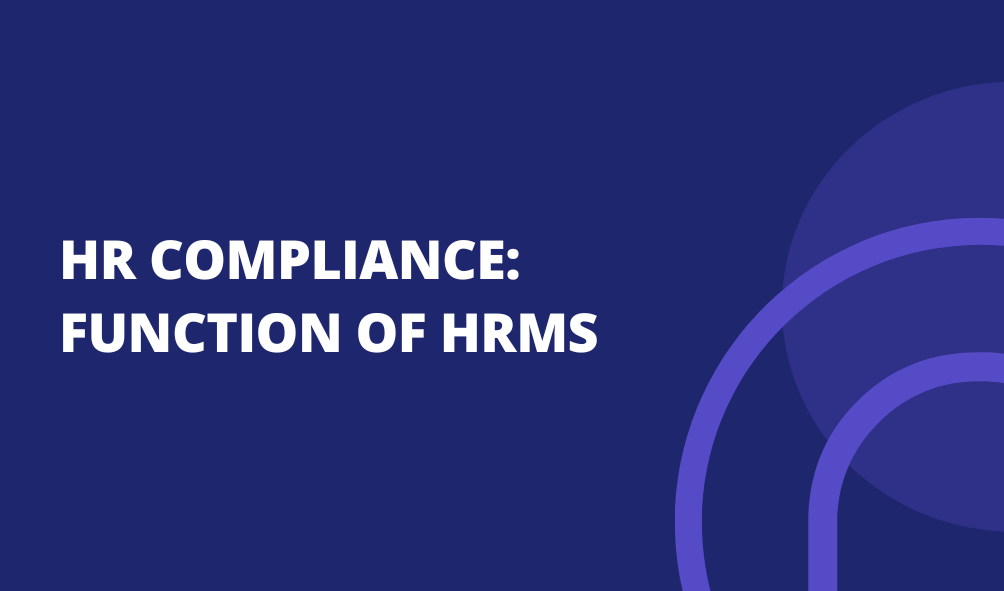Employee Management: A Core Function Of HRMS
Employee Management: A Core Function of HRMS
What is Employee Management?
Employee management is the basis of a company's workforce operations. It involves managing every part of an employee's journey.
This starts from hiring and goes to their exit. The goal is to provide their well-being, productivity, and compliance with company rules. A clear employee management system helps businesses improve HR processes. It boosts worker engagement and supports long-term growth.
In today's organizations, HR departments use employee management software and workforce management systems. These tools help centralize employee records, automate tasks, and improve decision-making with real-time data.
Key Components of Employee Management
1. Employee Onboarding and Record-Keeping
A structured onboarding process helps new employees integrate seamlessly into the organization. This phase includes:
- Collecting personal and professional details
- Assigning role-specific training programs
- Introducing workplace policies and compliance requirements
- Setting up performance expectations from day one
Digital employee record management software makes onboarding easier. It automates document checks, training schedules, and role assignments. This reduces the workload for HR teams.
2. Workforce Planning and Role Allocation
HR teams look at workforce needs to match employees with business goals. Important parts of workforce planning include:
- Identifying skill gaps and planning for recruitment
- Assigning employees to projects based on expertise and availability
- Forecasting future talent requirements to maintain operational efficiency
Workforce management software assists in predicting workforce demands and optimizing role assignments.
3. Performance Management and Employee Development
Continuous performance tracking ensures employees stay motivated and aligned with company objectives. Effective performance management includes:
- Setting Key Performance Indicators (KPIs) and targets
- Conducting regular performance reviews and feedback sessions
- Implementing Learning & Development (L&D) programs for skill enhancement
HR analytics tools provide insights into employee productivity, helping HR leaders refine strategies for better engagement and retention.
4. Employee Engagement and Retention
Keeping employees engaged helps reduce turnover and improve job satisfaction. Here are some strategies for employee engagement:
- Recognition programs and incentives for top performers
- Career growth opportunities and internal mobility
- Employee wellness initiatives, including work-life balance policies
Organizations that use an HR management system can track engagement levels. They do this through surveys, feedback systems, and pulse checks. These tools help measure employee sentiment.
5. Employee Relations and Compliance
Managing employee relations means handling concerns, solving conflicts, and following legal rules. HR teams focus on:
- Handling grievances and disputes professionally
- Enforcing workplace policies, ethics, and labor laws
- Implementing fair compensation and benefits packages
Human resource management (HRM) solutions help organizations stay updated on labor laws and prevent legal risks.
6. Offboarding and Exit Management
A clear exit process keeps things professional and helps with a smooth transition when an employee leaves. Important parts of offboarding include:
- Conducting exit interviews to understand reasons for departure
- Managing final payroll settlements and clearance
- Revoking system access and transferring responsibilities
Automation in the best HR management systems reduces manual errors and ensures compliance with data security protocols.
Benefits of an Employee Management System
- Centralized Employee Data: HR teams can access employee record management details, payroll, and attendance in a single dashboard.
- Improved Productivity: Performance tracking and training programs help employees achieve better results.
- Better Compliance: Automated updates keep policies aligned with labor laws.
- Stronger Employee Retention: Engagement strategies and career development opportunities improve job satisfaction.
Conclusion
Managing employees is key to an organization's success. A structured system improves productivity, compliance, and business growth. Modern employee management software makes these tasks easier. This reduces manual work and helps make a better work environment.







